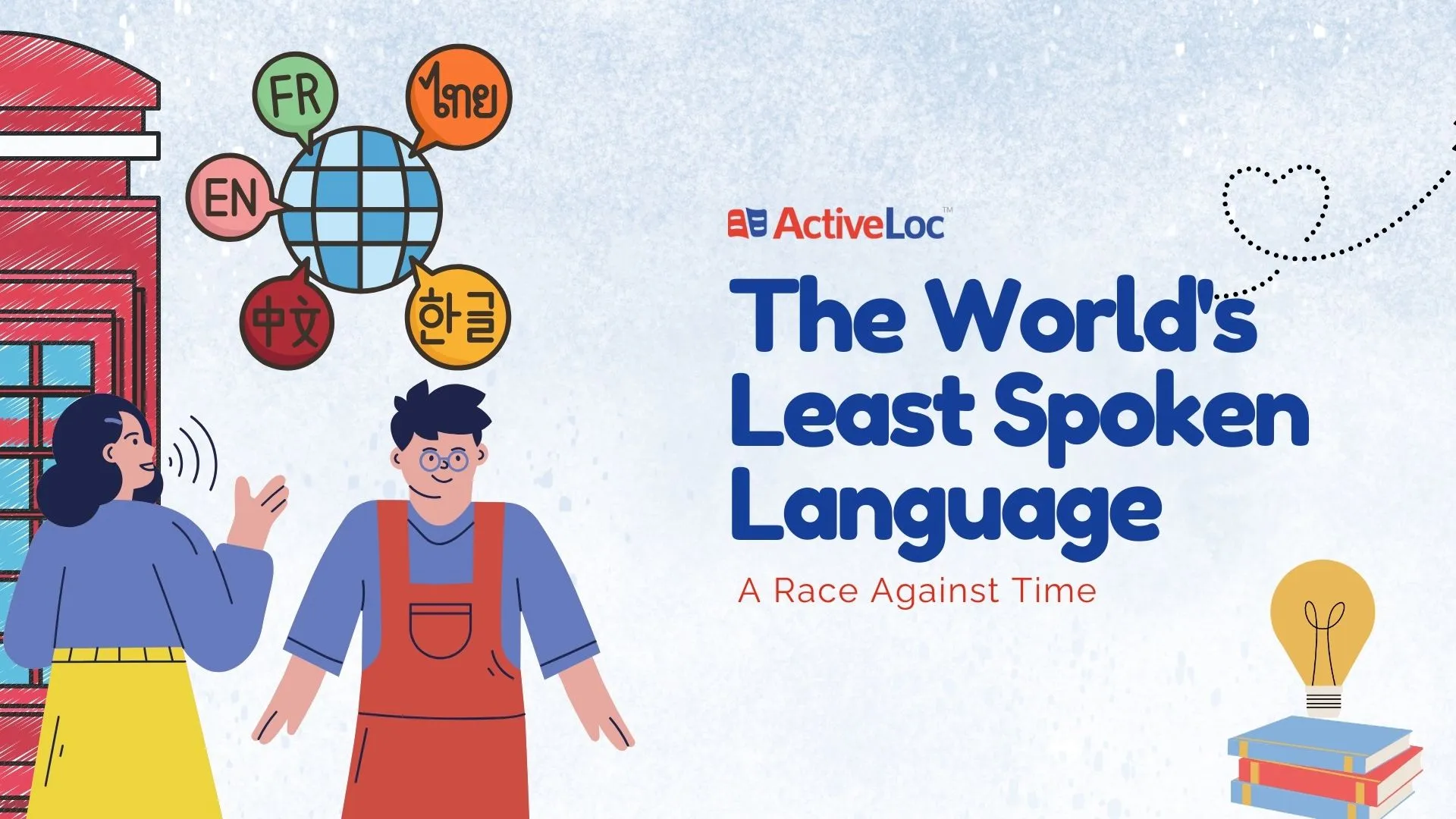Have you ever considered what happens when a language disappears? In a world dominated by a handful of global languages, thousands of unique voices are fading away.
Language does more than help people communicate it carries memories, identities, worldviews, and entire histories. Yet, while a few languages like English, Mandarin, and Spanish dominate global communication, thousands of others are fading silently.
Today, many languages have fewer than 1,000 native speakers and some are spoken by only a handful of elders in remote communities.
This blog explores some of the rarest and least spoken languages in the world, why they’re disappearing, and what efforts are underway to preserve them before they vanish forever.
Table of Contents
ToggleWhy Are Languages Dying Out?
The decline of these dying languages is not a natural process but a direct result of several factors. One of the most significant is cultural and economic pressure. As larger, more dominant languages like English, Spanish, and Mandarin spread, they often displace smaller languages, especially in education, business, and media.
For many people, speaking a dominant language is a necessity for economic opportunity and social mobility. This often leads to a cycle where parents stop teaching their native tongue to their children, who then don’t see the value in learning it. This breaks the intergenerational transmission of language, the single most important factor for a language’s survival. The result is a slow and tragic fade to silence.
A Glimpse into the World’s Least Spoken Language
While thousands of languages are still spoken around the world, many are now restricted to small communities—some with just a few thousand or even a few hundred speakers. These languages are not yet extinct, but they’re rapidly losing ground as younger generations shift to dominant global tongues.
Examples of Rare or Endangered Languages:
- Ainu (Japan): Once spoken across Hokkaido, this indigenous language now has only a few fluent speakers, though revitalization efforts are ongoing.
- Manx (Isle of Man): Declared extinct in the 1970s, it has since been revived and now has a few hundred speakers, mostly learners.
- Cornish (United Kingdom): Another revived Celtic language, Cornish boasts around 3,000 speakers today but remains at risk.
- Yuchi (United States): Spoken by fewer than 20 people in Oklahoma, Yuchi is unique because it’s not related to any other language family.
- Livonian (Latvia): Once spoken by coastal communities in Latvia, Livonian now has fewer than 50 speakers.
These are just a few examples that illustrate the broader problem of language extinction. The sad reality is that a language dies every two weeks, and UNESCO estimates that over half of the world’s approximately 7,000 languages could vanish by the end of this century.
10 Least Spoken Languages in the World
There is no “one” least spoken language in the world. There are a handful of languages that have less than 10 speakers like Lemerig and Oroqen with languages like Taushiro and Kaixana having only 1 speaker. Linguists race against time to record and document them before they vanish completely.
10 Least Spoken Languages in the World include:
| Language | Country | Speakers (Approx.) |
| Taushiro | Peru | 1 |
| Kaixana | Brazil | 1 |
| Tanema | Solomon Islands | 1 to 2 |
| Njerep | Nigeria / Cameroon | Less than 5 |
| Dumi | Nepal | 8 |
| Cahmicuro | Peru | Less than 10 |
| Ainu | Japan | Around 10 |
| Oroqen | China | Around 10 |
| Xârâcùù | New Caledonia | Around 10 |
| Lemerig | Vanuatu | Around 10 |
Source: UNESCO Atlas
Why Losing a Language Matters
These represent some of the world’s least spoken languages. Mere fragile remnants of ancient civilizations and oral traditions. Each time one disappears, we lose a unique understanding of human thought and history.
The disappearance of these languages is more than a statistic—it represents a profound loss of culture, knowledge, and identity. Each language carries a unique perspective on the world, and with every extinction, humanity loses a piece of its collective story. Understanding and supporting endangered languages is not just about preservation—it’s about safeguarding the richness of human diversity.
Frequently Asked Questions
An endangered language is one that is still being spoken but is at risk of falling out of use. A dead or extinct language has no native speakers left and is no longer being passed down to the next generation.
Preserving languages is crucial because each one is a storehouse of unique cultural knowledge, history, and identity. A language can contain specific terms for medicinal plants, environmental knowledge, or social structures that exist in no other language.
A “last native speaker” is the final person alive who learned and speaks a language as their mother tongue. When this person passes away without having passed the language on, the language becomes extinct.
According to Ethnologue, there are approximately 7,168 languages spoken in the world in 2025. However, many are classified as endangered, with about 40% at risk of disappearing.
Efforts include language revitalization programs, where communities and linguists work to teach languages to younger generations. Projects also focus on documenting languages through recordings, dictionaries, and digital archives before they are lost forever.
The plight of the world’s least spoken languages serves as a wake-up call. It highlights the importance of linguistic diversity and the need for global cooperation to prevent the loss of these invaluable cultural treasures.
Check out more of our latest Blogs below!

